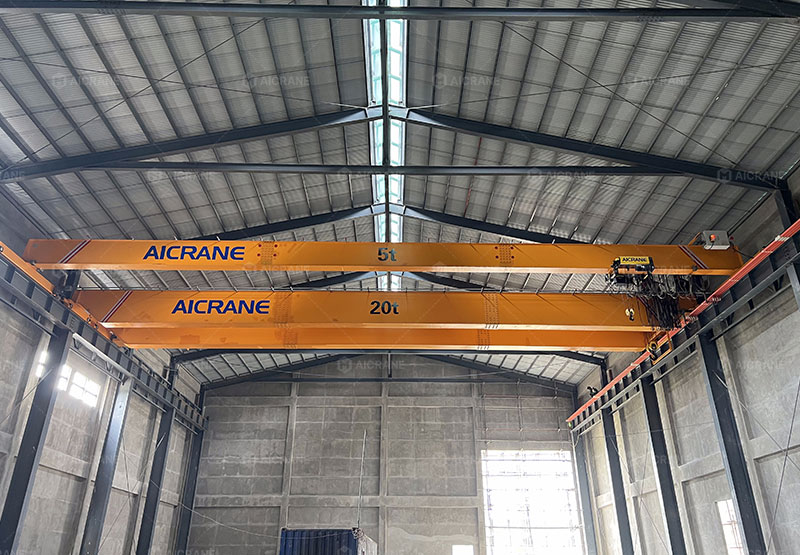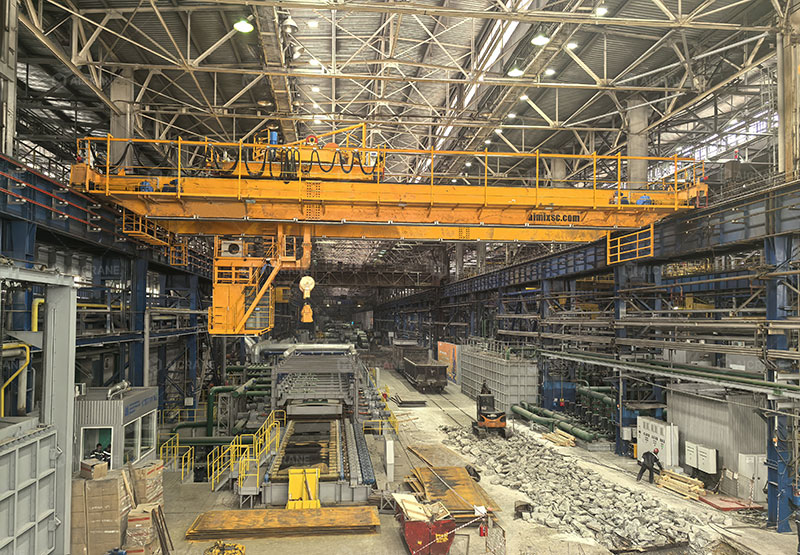In modern industrial environments, overhead cranes are indispensable for material handling, lifting, and transporting heavy loads efficiently and safely. As technology advances, operators increasingly look for features that improve performance, safety, and energy efficiency. Among these, Frequency Converters (FCs) and Variable Frequency Drives (VFDs) have emerged as critical components for optimizing crane operations. While these devices bring clear benefits, they also introduce additional costs. This article provides a comprehensive analysis of how adding frequency converters and VFDs affects overhead crane costs and whether the investment is worthwhile.

Understanding Frequency Converters and VFDs
Before diving into overhead crane cost analysis, it is essential to understand what frequency converters and VFDs do.
-
Frequency Converters (FCs): These devices control the frequency and voltage supplied to the crane’s electric motors. By adjusting these parameters, FCs allow the motor speed to be varied, providing smooth and precise control over lifting, lowering, and traversing motions.
-
Variable Frequency Drives (VFDs): VFDs are specialized types of frequency converters designed to regulate motor speed and torque continuously. They can manage acceleration and deceleration, reduce mechanical stress on components, and enhance energy efficiency.
Both devices are integral to modern overhead cranes, particularly in industries requiring precise load handling, including steel fabrication, automotive manufacturing, precast concrete production, and heavy industrial equipment handling.
Benefits of Adding FCs and VFDs
Adding frequency converters and VFDs offers multiple operational advantages, which help justify their additional cost.
-
Energy Efficiency: Traditional cranes operate at fixed speeds, consuming more electricity during acceleration and deceleration. VFDs optimize motor operation to match load requirements, reducing energy consumption by 20–30% in many cases.
-
Smooth Motion and Load Control: FCs and VFDs provide smooth starting, stopping, and load handling. This precision minimizes load swing, protecting both the cargo and the crane structure.
-
Reduced Mechanical Stress: By controlling acceleration and deceleration, VFDs reduce shock loads on mechanical components such as hoists, wheels, brakes, and gears. This prolongs equipment lifespan and reduces maintenance costs.
-
Enhanced Safety: Smooth motion reduces the risk of sudden jolts, which can cause accidents. VFDs also allow for speed reduction in critical areas, improving operator safety.
-
Operational Flexibility: Cranes with VFDs can adapt to varying workloads and operating conditions. This is especially important in multi-use facilities where cranes handle loads of different weights and sizes.
-
Improved Productivity: Precise control allows operators to move heavy loads faster and more efficiently, potentially increasing throughput and overall plant productivity.

Cost Components of Adding FCs and VFDs
While the benefits are significant, frequency converters and VFDs introduce additional costs in several areas:
1. Equipment Cost
-
The primary cost comes from purchasing the frequency converter or VFD itself. Prices vary depending on the crane’s load capacity, motor size, and brand. For light-duty cranes (1-15 ton overhead crane), VFDs may cost between $1,500–$5,000, whereas for heavy-duty cranes (50-100 tons or more), prices can exceed $15,000–$50,000.
-
High-performance VFDs with advanced features, such as regenerative braking or precise torque control, are more expensive but provide additional energy savings and operational benefits.
2. Installation Cost
-
Installing a VFD involves electrical wiring, control integration, and sometimes retrofitting the crane’s existing motor system.
-
Professional installation ensures proper calibration and integration with crane controls. Installation costs can range from 10–30% of the VFD equipment cost, depending on crane complexity and site requirements.
3. Maintenance and Support Costs
-
While VFDs reduce mechanical wear, they themselves require regular inspection, firmware updates, and occasional component replacement, particularly for power electronics and cooling systems.
-
Maintenance contracts for VFD-equipped cranes may increase annual service costs slightly, but this is often offset by reduced mechanical maintenance.
4. Training Costs
-
Operators and maintenance staff need training to handle VFD-controlled cranes safely and efficiently. Training programs can range from a few hundred to several thousand dollars, depending on the complexity and number of personnel.
5. Integration with Existing Systems
-
If adding a VFD to an existing crane, integration with existing control panels, hoist systems, and safety mechanisms may require customization, which adds to the EOT crane cost.
-
Upgrading legacy cranes often costs more than specifying VFDs in new cranes due to retrofitting challenges.
ROI and Cost Justification
Despite the upfront costs, adding FCs and VFDs often pays for itself over time through energy savings, reduced maintenance, and improved productivity.
-
Energy Savings: In facilities with continuous crane operations, energy savings can be substantial. For instance, a 50-ton crane operating 8–12 hours per day could save $2,000–$5,000 annually on electricity by using VFDs.
-
Reduced Maintenance Costs: Smoother motion and lower mechanical stress reduce downtime and extend the lifespan of gears, brakes, and hoists, potentially saving thousands annually.
-
Productivity Gains: Faster, more precise handling allows more operations per shift, indirectly increasing revenue.
In most cases, the payback period for investing in VFDs ranges from 1 to 4 years, depending on crane utilization, energy costs, and maintenance savings.
Factors That Affect the Cost Impact
-
Crane Capacity and Size: Larger cranes require higher-rated VFDs, which are more expensive.
-
Number of Motors Controlled: Single-motor cranes cost less to equip than multi-motor systems with hoist, trolley, and bridge motors.
-
Existing Infrastructure: New cranes can integrate VFDs during manufacturing, while retrofitting older cranes may require more work and cost.
-
Quality and Brand: Premium VFD brands offer higher reliability and performance but at a higher price.
-
Facility Energy Prices: The higher the electricity cost, the more attractive the ROI from VFDs becomes.
Case Study Example
Consider a 30 ton overhead crane used in a precast concrete factory. The crane operates 10 hours daily, five days a week.
-
Installing a high-quality VFD costs $20,000 including equipment and installation.
-
Annual energy savings are estimated at $4,500, and mechanical maintenance savings are around $3,000.
-
Total annual savings: $7,500
-
Payback period: 20,000 ÷ 7,500 ≈ 2.7 years
After the payback period, the VFD continues to provide cost savings, enhanced safety, and improved productivity.
Conclusion
Adding frequency converters and VFDs to overhead cranes significantly increases the initial cost, but the benefits in energy efficiency, smooth motion, reduced mechanical wear, safety, and productivity can outweigh these costs over time. While equipment, installation, maintenance, and training costs are factors to consider, careful evaluation of crane usage, energy prices, and operational demands often justifies the investment.
For companies planning to invest in new cranes or upgrade existing systems, including VFDs is not merely a cost – it is a strategic choice that enhances long-term operational efficiency, safety, and profitability.